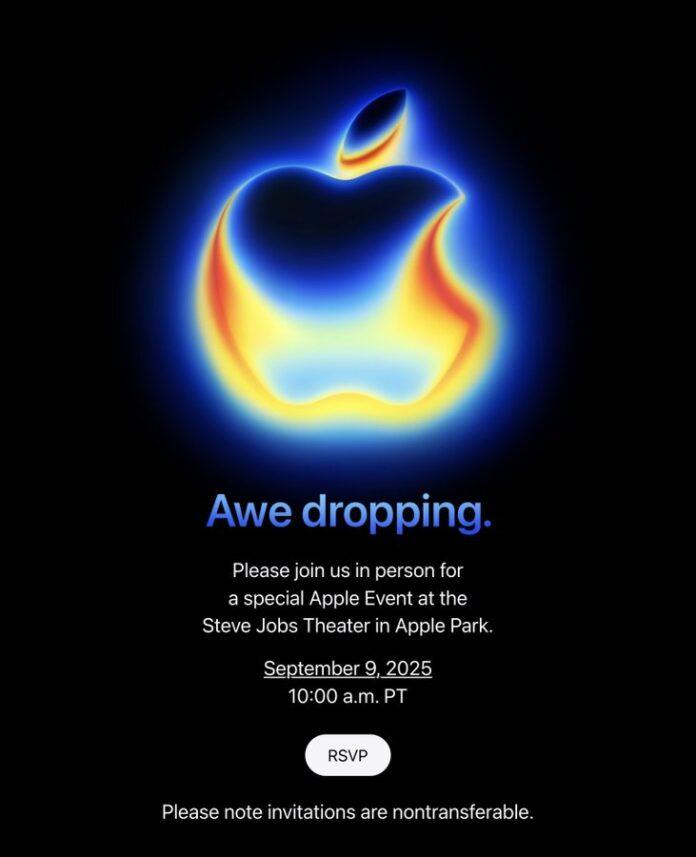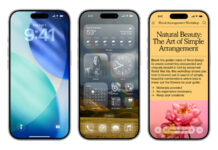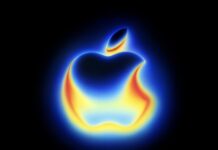Apple is gearing up for its next iPhone launch on September 9, and if the most credible reporting pans out, 2025 will bring one of the most significant updates in years. Expect a new model in the lineup, broader access to premium display features, camera upgrades that matter in daily use, and a push toward Apple-designed wireless chips. Here is what the best available reporting and supply chain chatter suggest so far, along with what it means for shoppers weighing an upgrade.
When is Apple likely to announce iPhone 17?
Apple has announced a media event for Tuesday, September 9, 2025, at Apple Park. Tech outlets that received the invite say the tagline is “Awe Dropping,” which typically signals that iPhone will headline the show. Apple has not confirmed product names or features in advance, but the calendar aligns with Apple’s long-standing early September iPhone release schedule.
The lineup: iPhone 17, Pro, and Pro Max, plus a new “Air”
Multiple reliable Apple-watchers expect four models this year: iPhone 17, iPhone 17 Pro, iPhone 17 Pro Max, and a new iPhone 17 Air. The Air is widely described as a thinner, mid-tier model that effectively replaces the “Plus” option, which has struggled to find an audience. Reports indicate a screen size of around 6.6 inches and a body that targets a thickness of 6 mm or less, positioning the Air between the 6.3-inch Pro and the 6.9-inch Pro Max. The standard iPhone 17 is also expected to increase in size from 6.1 inches to 6.3 inches.
Design-wise, rumors suggest a refreshed camera layout. Several outlets report that Apple is testing a horizontal camera bar for at least some models, while Pro models may feature a half-glass, half-aluminum exterior for enhanced durability. These changes are not confirmed, but consistent references have appeared across multiple briefings and mockups. MacRumors
Displays: ProMotion for everyone
For years, Apple kept its smooth 120 Hz ProMotion display on the Pro phones. In 2025, that wall may come down. The expectation is that all four iPhone 17 models will adopt LTPO OLED panels that support variable refresh up to 120 Hz, which means smoother scrolling and more responsive gaming. LTPO panels also enable very low refresh rates, a prerequisite for features like an always-on display, although it is not yet clear whether Apple will activate always-on across the entire range.
Some reports also pointed to a new anti-reflective, scratch-resistant coating for Pro screens, but then walked that back amid concerns about manufacturing scale. If you see mention of a new coating, treat it as tentative until Apple details it on stage.
Cameras: a sharper selfie for all, big upgrades at the top
Across the board, the front camera is expected to increase from 12 megapixels to 24 megapixels, featuring a six-element lens. That is a boring-sounding change with real-world impact, since it should improve detail, enable cleaner cropping for social and video calls, and help low-light selfies. On the high end, reporting points to a Pro Max with three 48 megapixel rear cameras, including an upgraded ultrawide and a tetraprism telephoto, potentially enabling 8K video capture. Some Pro rumors even mention a variable, mechanical aperture to better control depth of field, though that detail is less certain.
Performance and connectivity: A19 chips, Wi-Fi 7, and Apple’s own radio silicon
Expect new A-series chips with the usual year-on-year gains. More interesting is what happens outside the main processor. Reporting indicates Apple will ship its first custom Wi-Fi chip with Wi-Fi 7 support in the iPhone 17 family, part of a longer-term plan to integrate wireless subsystems for better power efficiency and tighter control over the stack. There is also persistent chatter that Apple will test its first in-house 5G modem in at least one model, commonly pegged to the iPhone 17 Air, while other models continue with Qualcomm. Apple has never commented on modem plans, but the rumor resurfaced repeatedly in 2025 supply chain notes.
What does Wi-Fi 7 mean in practice? With a compatible router, Wi-Fi 7 can utilize the 2.4, 5, and 6 GHz bands simultaneously to reduce congestion and enhance peak speeds. It is not magic, and your internet connection remains the ceiling, but homes with many devices should see more consistent performance.
Thermal management and battery changes
Thermals have been a talking point for recent phones. This time, Pro models are rumored to adopt vapor chamber cooling, which would help spread heat more efficiently, thereby sustaining performance during long gaming sessions or 4K video capture. Some reports suggest that Apple is exploring vapor chambers across its lineup, although this is less certain.
When it comes to batteries, watch for two practical shifts. First, industry reporting indicates a broader adoption of an adhesive that is easier to remove, which Apple introduced on select iPhone 16 models. That change matters for out-of-warranty battery service. Second, Qi2.2 support could raise third-party wireless charging speeds to as high as 25 W, up from the current 15 W limit, with Pro models also testing reverse wireless charging for accessories. Apple has not confirmed either change, but they fit a broader trend toward faster, more standardized wireless charging.
It is also worth noting the European Batteries Regulation, which phases in stricter rules regarding battery sustainability and serviceability over several years, culminating in 2027. Apple’s recent work on easier battery removal appears to be aligned with that trajectory, although the law does not mandate fully user-replaceable batteries by 2025.
iOS 26 onboard: new look, new AI, familiar iPhone feel
New iPhones ship with the latest iOS, and this year that means iOS 16. Apple has previewed a major design refresh called Liquid Glass. Think of translucent, layered surfaces that reflect light in real-time, coupled with simplified navigation so menus get out of the way. The redesign spans system apps and extends to other Apple platforms, so your iPhone, iPad, and Mac feel more consistent.
Apple is also expanding its Apple Intelligence features, including Live Translation in Phone, Messages, and FaceTime, as well as smarter on-device understanding of what is on your screen, upgrades to Shortcuts, and developer hooks for AI features. As with last year, some capabilities require recent hardware, but the overall theme is practical, with flow assistance that doesn’t feel like a demo.
Should you wait, and what we still do not know
If you are on an iPhone older than iPhone 14, the rumored combination of a smoother display on every model, a sharper selfie camera, and better wireless performance looks compelling. If you own a recent Pro, the case for upgrading will likely hinge on camera specifics, new thermal design, and whether Apple brings a meaningful new feature or accessory tie-in to the Pro line.
There are still unknowns. Pricing for the new Air model is not confirmed. Apple’s plans for the Dynamic Island aperture in 2025 are being contested, with some analysts expecting a slightly smaller cutout and others suggesting it will remain the same as the iPhone 16. And although several outlets mention a horizontal camera bar, Apple’s final industrial design and finishes often remain under wraps until the event.
Bottom line
All signs point to a broader rethink of the iPhone lineup in 2025. The rumored iPhone 17 Air provides Apple with a thin, stylish mid-tier option, while baseline models catch up on premium display technology, and everyone benefits from a better front camera. Pro buyers should watch for thermal and camera details, as well as any new display or material tricks Apple decides to incorporate. With Apple’s September event now a few days ahead, the wait to separate rumor from reality is short, and the signals so far suggest a meaningful year for upgraders.
Key sources referenced include Apple’s September 9 event invite coverage, as well as ongoing iPhone 17 reporting and roundups that aggregate analyst notes, supplier guidance, and software previews. Read more at The Verge and TechCrunch for event timing, and MacRumors’ deep dives on iPhone 17 hardware and iOS 26 features.

















